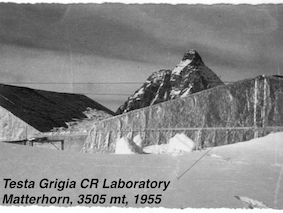Speaker
Dr
Alexander Mishev
(ReSolve Center of Excellence, University of Oulu, Finland)
Description
The possible effect of solar variability, accordingly cosmic rays variation on atmospheric physics and chemistry is highly debated over the last years. According to several recent models the induced by cosmic rays atmospheric ionization plays a key role in several different processes. At recent, an apparent effect on minor constituents and aerosols over polar regions during major solar proton events was observed. The ion production rate during a special case of events, namely Ground Level Enhancements (GLEs) abruptly increases. These relativistic and sub-relativistic solar protons lead to an atmospheric cascade development with secondaries reaching the ground level. Then it occurs a superposition of the contribution of cosmic rays with galactic and solar origin. The solar cycle 23 provided overall 16 GLEs (http://cosmicrays.oulu.fi/GLE.html), several of which are strong enhancements. The period of end October - beginning of November 2003 was characterized by a strong cosmic ray variability, namely a sequence of three events: GLE 65 (28.10.2003), GLE 66 (29.10.2003) and GLE 67 (02.11.2003) was observed. In addition, there were several Forbush decreases, which led to a suppression of galactic cosmic ray flux. As a consequence the cosmic ray induced ion production in the atmosphere and the corresponding ionization effect were subject of dynamical changes. In this study we compute the complex ion production due to cosmic rays during the Halloween sequence of GLEs 65, 66 and 67 on October-November 2003 and we estimate the ionization effect. The time evolution of ion production is computed in a realistic manner. The spectral and angular characteristics of the solar protons are explicitly considered throughout the events as well their time evolution. The ionization effect during the period is computed at several altitudes above the sea level in a region with geomagnetic cutoff rigidity Rc ≤ 1 GV, i.e. over the high latitude, sub-polar and polar regions.
Author
Prof.
Peter Velinov
(SRTI-BAS)
Co-author
Dr
Alexander Mishev
(ReSolve Center of Excellence, University of Oulu, Finland)

